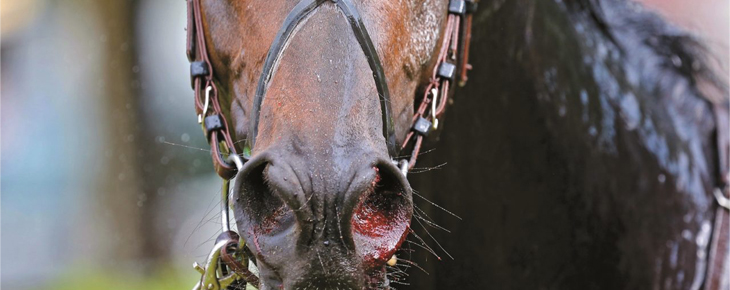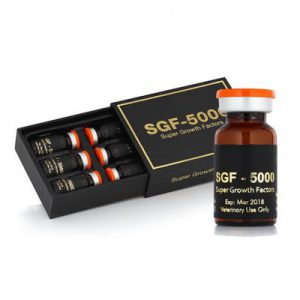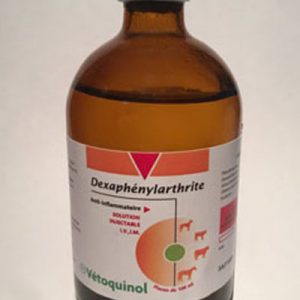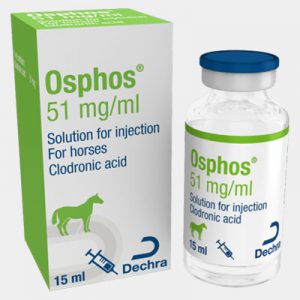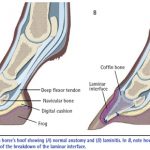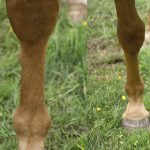Perhaps the most prominent of all disorders affecting racehorses is “bleeding” or exercise-induced pulmonary hemorrhage (EIPH). We now know, for a fact, that most racehorses will bleed during their careers. Many horses bleed every time they undertake intense exercise, such as racing and breezing. We also know that bleeding can occur in situations other than dash or flat racing. EIPH has also been detected in horses such as three-day eventers, steeplechasers and polo ponies… among others. EIPH has also been observed in draft horses pulling heavy loads. The one common denominator is strenuous exercise.
Even though EIPH has been recognized for over 300 years, we still have more questions than answers when it comes to the cause and prevention of EIPH. Research in the last 30 plus years has shed some light on why horses bleed during strenuous exercise… but even today there is no true consensus regarding the cause of EIPH.
How do we treat and prevent bleeding? It is a tough task. In large part, it is because of the controversy concerning the potential performance-enhancing effects of furosemide (Salix, formerly known as Lasix), the drug administered to racehorses who have a history of bleeding. Also, in many instances, Salix is not the answer because it has a short half-life.
How Common is EIPH???
To answer this question, we need to define what EIPH is. Once upon a time, before the advent of endoscopes, a horse was called a “bleeder” only when it shed blood from their nose after a race (epistaxis). However, research studies have shown that epistaxis occurs in only an extremely small percentage of racehorses that actually bleed (1-2%).
Therefore, if bleeding is defined as the presence of blood in the windpipe or trachea after hard exercise, the percentage of affected absolutely horses skyrockets. This type of EIPH has been referred to as “internal” bleeding. In this case, the horse bleeds from the lung, up into the trachea and not out of the nose.
In studies of Standardbreds and thoroughbreds, where these horses were scoped 60-90 minutes after racing, bleeding was detected in 50-60% of horses! In studies where the same horses were examined after three races, almost 90% bled on at least one occasion!!!
Another indicator of bleeding is the presence of a red blood cell breakdown product hemosiderin in lung macrophages. These are detected from a broncho alveolar lavage (BAL) or tracheal wash, in which a small amount of fluid is placed into the lung and then drawn out to be analyzed, which essentially “washes” part of the lung. Studies have shown that over 90% all racehorses have these hemosiderin-laden macrophages in these lung secretions, indicating that there was some degree of bleeding that has occurred in the recent past.
Also, it is apparent that even young racehorses experience some degree of EIPH soon after beginning fast work. In general, the incidence and severity of bleeding increase with age, due to scarring that occurs from previous bouts with EIPH. Consistent with this bleeding from the nose is more prevalent in older horses.
All of this tells us that EIPH does occur in most… if not all, racehorses. The severity of bleeding will probably vary greatly between horses but appears to greatly worsen as the age of the horse increases. There have been very few studies on “bleeding horses” performing other intense exercise (eg., three-day eventing or polo). In one study of top-level three-day event horses, only about 13% had evidence of bleeding after the cross-country phase of the competition.
Can EIPH Alter Athletic Ability?
EIPH causes a decrease in racing performance when a horse bleeds. However, this is another one of the combative issues surrounding EIPH. Remember that most horses will bleed to some extent during strenuous exercise, thereby making it almost impossible to sort out the effects of bleeding on racing and performance. Furosemide is administered as a pre-race in the belief that it will prevent bleeding and allow the horse to perform at their best, thereby “evening the playing field” among bleeders and non-bleeders in that race.
Some believe that mild bleeding likely has minimal or no effect on performance. We tend to disagree. You try to run a race then then pinch your nose closed for the last 1/8th of the race. That short lack of oxygen will take a few ticks away from your time, plus increase lactic acid levels. Obviously, severe bleeding would impair exercise performance by decreasing oxygen uptake in the lung, which shrinks the amount of space in the airway. Also, blood could flood many of the airways which will prevent the normal exchange of oxygen and carbon dioxide.
The long-term effects of repeated bleeding episodes on lung health and function also should be considered. Researchers have proposed that EIPH contributes to the development of chronic inflammatory airway disease (CIAD), which is a condition that is associated with a decrease in athletic performance.
Most horses that work at high energy intensity tend to bleed and those that do and are bleeders require a special management program. Minimizing your horse’s exposure to stress, allergens, and dust and also maximizing their level of fitness for their job will ensure you that every breath they take is as healthy as possible.
